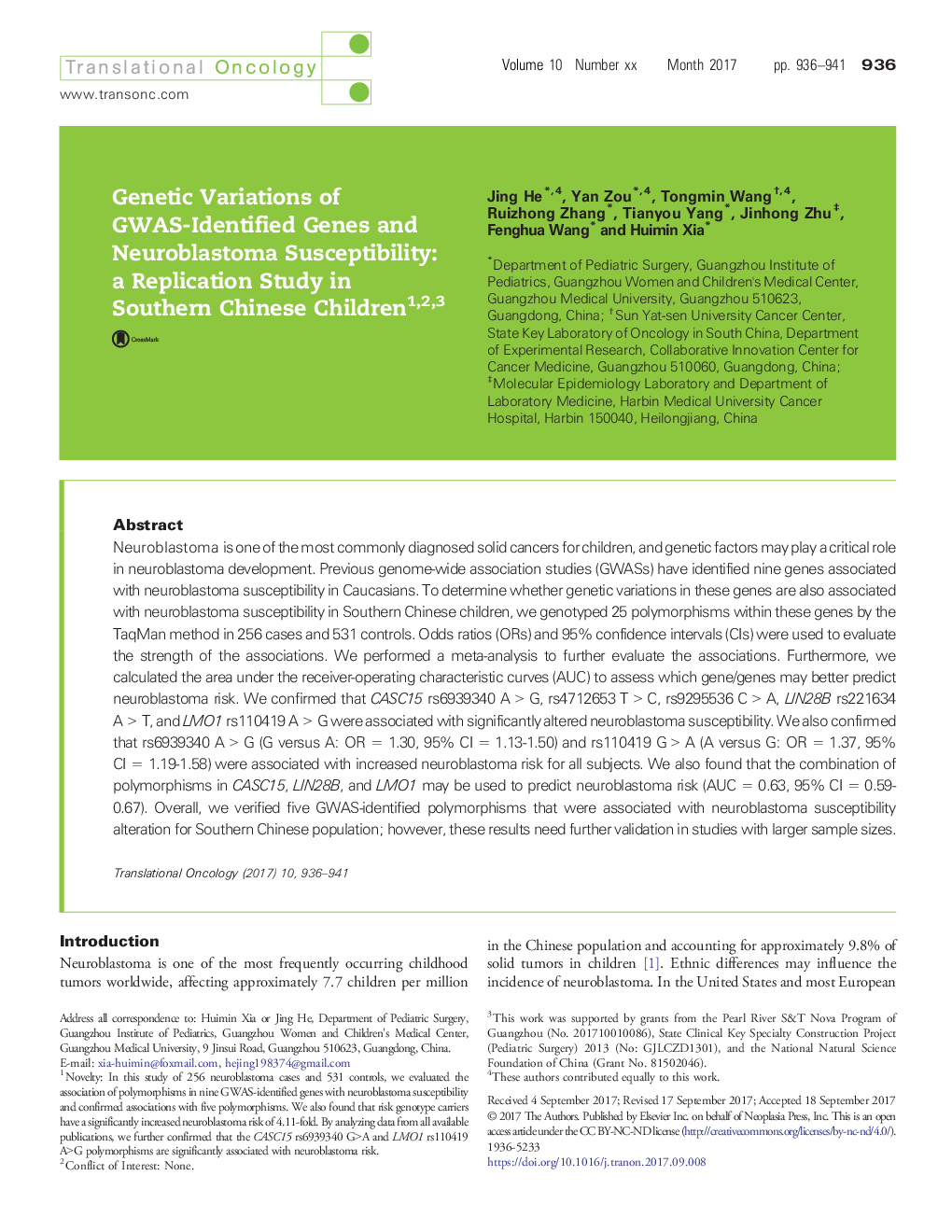| Article ID | Journal | Published Year | Pages | File Type |
|---|---|---|---|---|
| 5530052 | Translational Oncology | 2017 | 6 Pages |
Neuroblastoma is one of the most commonly diagnosed solid cancers for children, and genetic factors may play a critical role in neuroblastoma development. Previous genome-wide association studies (GWASs) have identified nine genes associated with neuroblastoma susceptibility in Caucasians. To determine whether genetic variations in these genes are also associated with neuroblastoma susceptibility in Southern Chinese children, we genotyped 25 polymorphisms within these genes by the TaqMan method in 256 cases and 531 controls. Odds ratios (ORs) and 95% confidence intervals (CIs) were used to evaluate the strength of the associations. We performed a meta-analysis to further evaluate the associations. Furthermore, we calculated the area under the receiver-operating characteristic curves (AUC) to assess which gene/genes may better predict neuroblastoma risk. We confirmed that CASC15 rs6939340 AÂ >Â G, rs4712653 TÂ >Â C, rs9295536 CÂ >Â A, LIN28B rs221634 AÂ >Â T, and LMO1 rs110419 AÂ >Â G were associated with significantly altered neuroblastoma susceptibility. We also confirmed that rs6939340 AÂ >Â G (G versus A: ORÂ =Â 1.30, 95% CIÂ =Â 1.13-1.50) and rs110419 GÂ >Â A (A versus G: ORÂ =Â 1.37, 95% CIÂ =Â 1.19-1.58) were associated with increased neuroblastoma risk for all subjects. We also found that the combination of polymorphisms in CASC15, LIN28B, and LMO1 may be used to predict neuroblastoma risk (AUCÂ =Â 0.63, 95% CIÂ =Â 0.59-0.67). Overall, we verified five GWAS-identified polymorphisms that were associated with neuroblastoma susceptibility alteration for Southern Chinese population; however, these results need further validation in studies with larger sample sizes.
